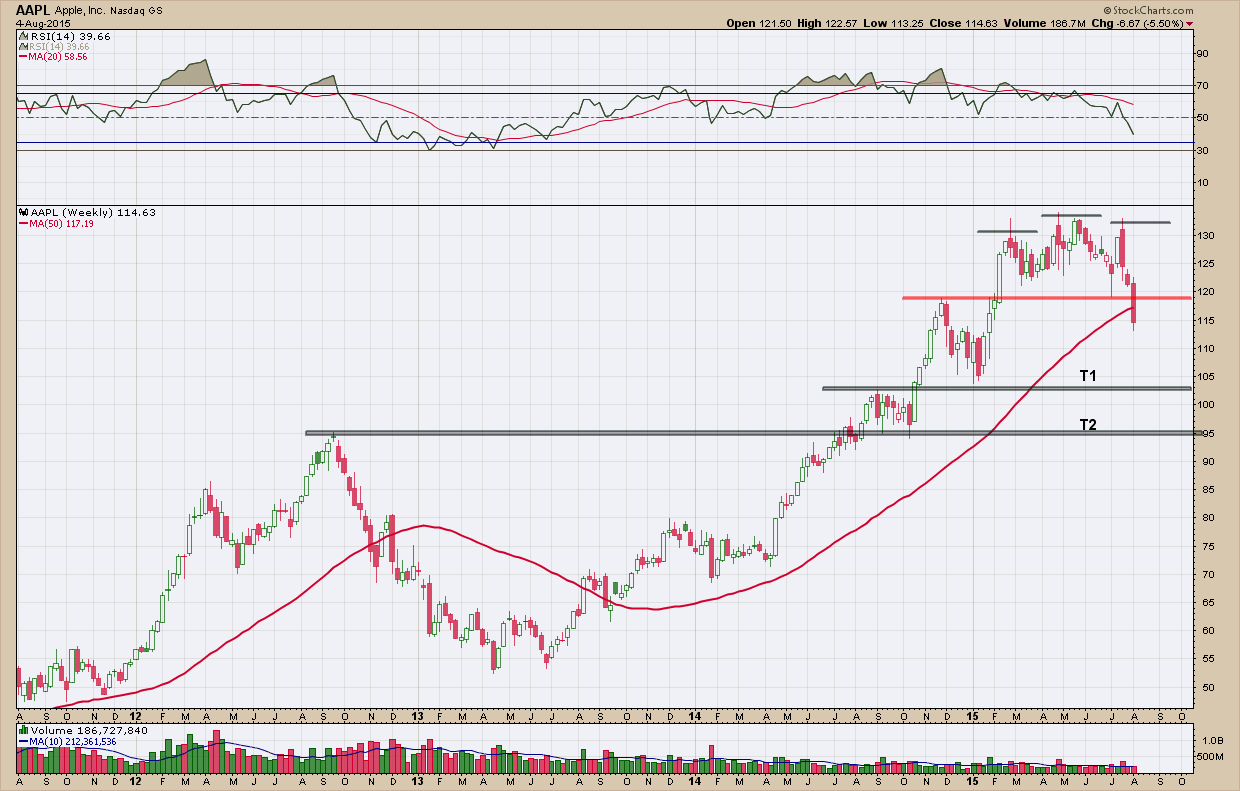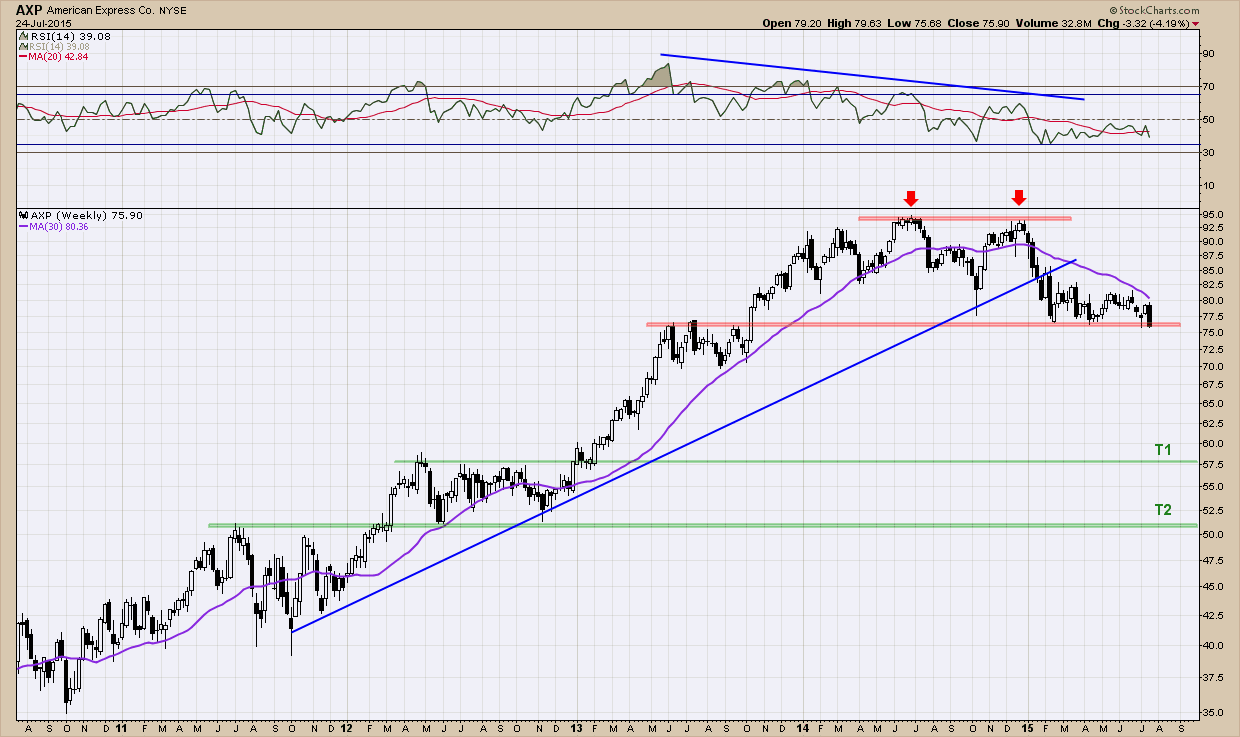There is no one company that is covered by the media more than Apple. Anything you want to know about them you can find on the internet. As such, I tend to shy away from talking about them as it has likely been covered by someone somewhere at some time before. I do make exceptions when something of technical significance occurs which brings me to today's post.
Apple has grown to be such a large part of the US stock market as they constitute almost 15% of the Nasdaq 100 index and almost 4% of the SP500 index despite being only 1% and .2% of the number of companies within the index respectively. So it’s easy to understand, how Apple goes, so goes the markets and why it is covered in such depth.
As I was scanning my charts yesterday I noticed AAPL printed a very ugly, big red down candle on big volume. It also closed right on a very important support/resistance line making today’s action very important. It would either need to bounce higher and get the bulls back in control or breakdown setting up for a bigger fall. In the daily chart of AAPL below, you can see it gapped lower (which typically occurs when there is a breach of a major support line) today and sold off hard on even larger volume than yesterday’s. You can also see this move should not have been too much of a surprise as both momentum indicators, RSI and MACD, have been trending lower, since February even reaching bearish levels. If we get follow through in the coming days, the breakdown target is slightly above $104, about a 10% loss from its high. As you would expect and because of AAPL’s significance to the indexes, they too, closed lower today mostly due to AAPL's demise.
Taking a look at the a longer term, weekly look at the chart of AAPL below you can see the head and shoulders pattern which pierced through its neckline this week giving us downside target and matching up with the daily at around $104. If it were to overshoot and extend lower, there is a lot of support at the $100 level where it would likely bounce and find a swarm of buyers.
It will be interesting over the next few weeks to see this unfold right in front of our eyes with a stock that has almost a cult following and many worshipers. If I were a betting man and because of this, I would expect the stock would likely fall short of its downside targets as I expect the BTFD (buy the dip) crowd to be out in full force. That combined with the fact the 4th has historically been the worst day for a normally very boring stock market in August going back to 1950 has me leaning wherever this “retracement” ends will likely be a good buying opportunity. Either way this 10 round fight between the AAPL bears and fanboi’s is an interesting distraction that doesn’t require pay-per-view to watch. Grab some popcorn and get comfy.






